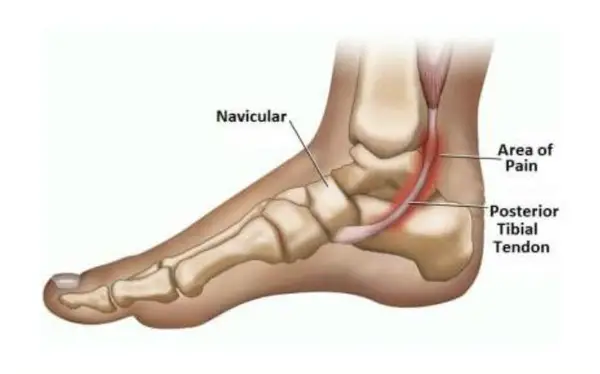FOOT AND ANKLE CONDITION
What is Posterior Tibial Tendon Dysfunction (PTTD)?
Posterior Tibial Tendon Dysfunction (PTTD), also known as adult-acquired flatfoot, is a progressive condition that affects the tendon supporting the arch of your foot. If left untreated, it can lead to chronic pain, collapsed arches, and long-term disability.
At SoCal Foot and Ankle Doctors in Santa Monica, we specialize in early diagnosis and advanced treatments for PTTD to restore foot stability and function.

Symptoms
- Pain and swelling along the inside of the ankle
- Flattening of the arch
- Difficulty standing on tiptoe
- Rolling in of the ankle (overpronation)
- Progressive flattening of the foot
Causes & Risk Factors
- Overuse injuries (common in runners and active adults)
- Flatfoot biomechanics
- Obesity or diabetes
- Age-related tendon weakening
- Trauma or ankle sprains
Diagnosis
Our diagnostic process includes:
- Physical exam with gait and arch assessment
- Digital X-rays
- Diagnostic ultrasound or MRI (if needed)
Treatment Options
Conservative Options:
- Custom orthotics to support the arch
- Ankle braces (e.g., Arizona AFO)
- Physical therapy
- Immobilization during acute inflammation
- Anti-inflammatory medications
Advanced Options:
- Shockwave Therapy to promote tendon healing and reduce inflammation
- Amniotic or regenerative injections (PRP, stem cell-based)
- Surgical tendon repair or flatfoot reconstruction in severe cases
Why Choose SoCal Foot and Ankle Doctors?
- Advanced imaging and diagnostics on-site
- Non-surgical and surgical options under one roof
- Specialists in arch disorders and tendon pathologies
Book an Appointment
If you notice foot flattening or inner ankle pain, contact our Santa Monica podiatry office today to schedule an evaluation.
Our Docters
Our Board Certified Podiatrists
Socal Foot and Ankle doctors are committed to delivering the most exceptional treatments.

Board Certified Foot & Ankle Specialist
Office Time
Location: Santa Monica
Mon – Thur: 9:00 AM – 5:00 PM
Friday: 9:00 AM – 5:00 PM

Board Certified Foot & Ankle Specialist
Office Time
Location: Santa Monica
Mon – Thur: 9:00 AM – 5:00 PM
Friday: 9:00 AM – 5:00 PM
Request Appointment
NON-INVASIVE ADVANCED TREATMENT
BOARD CERTIFIED
FOOT & ANKLE
Surgeons
Years Experience
Happy Patients
Location
Local Partners
